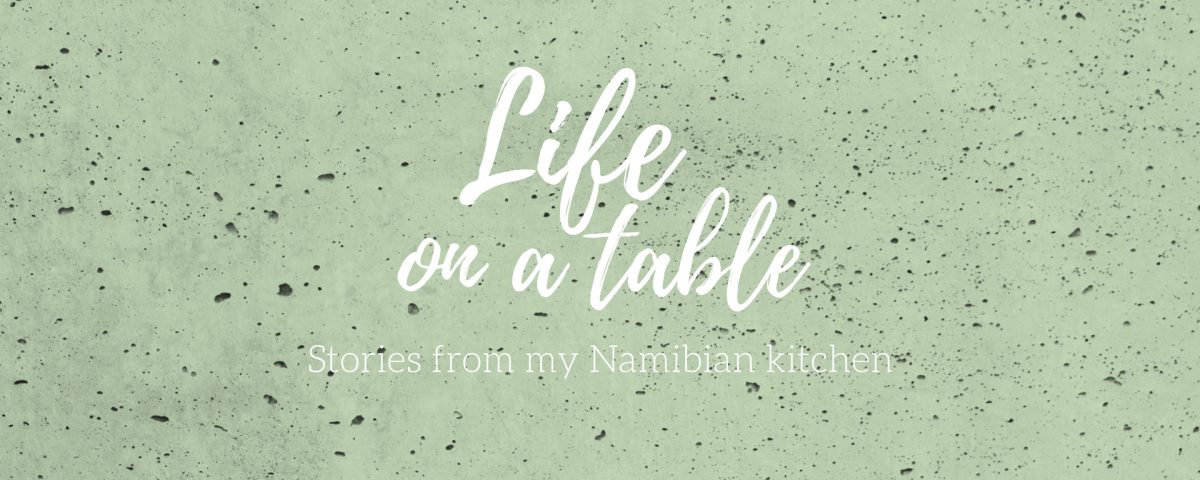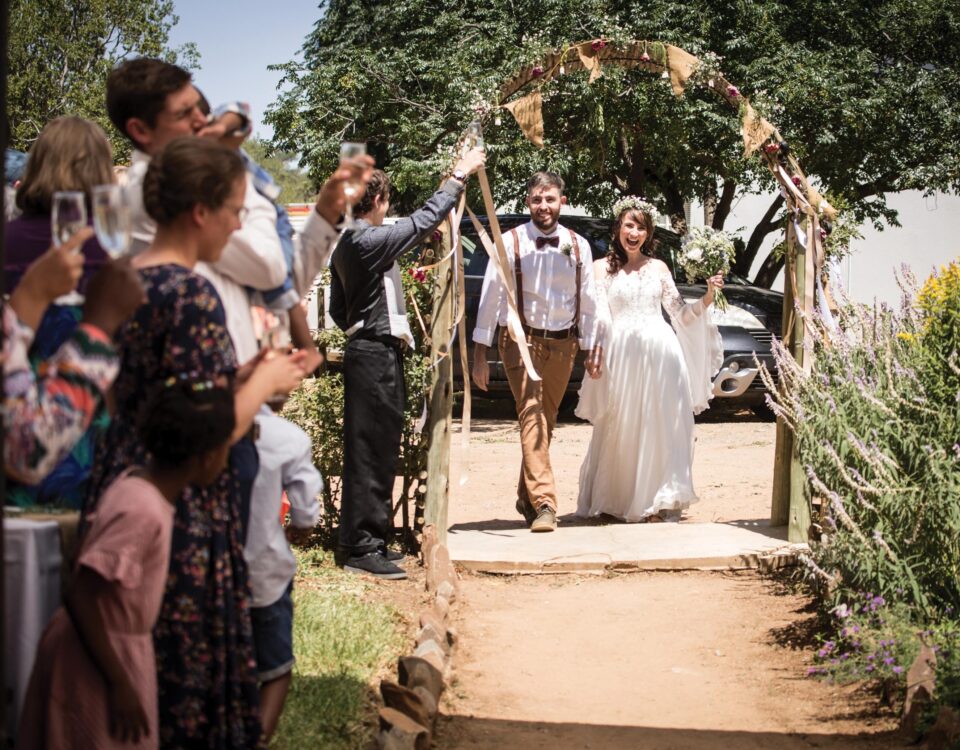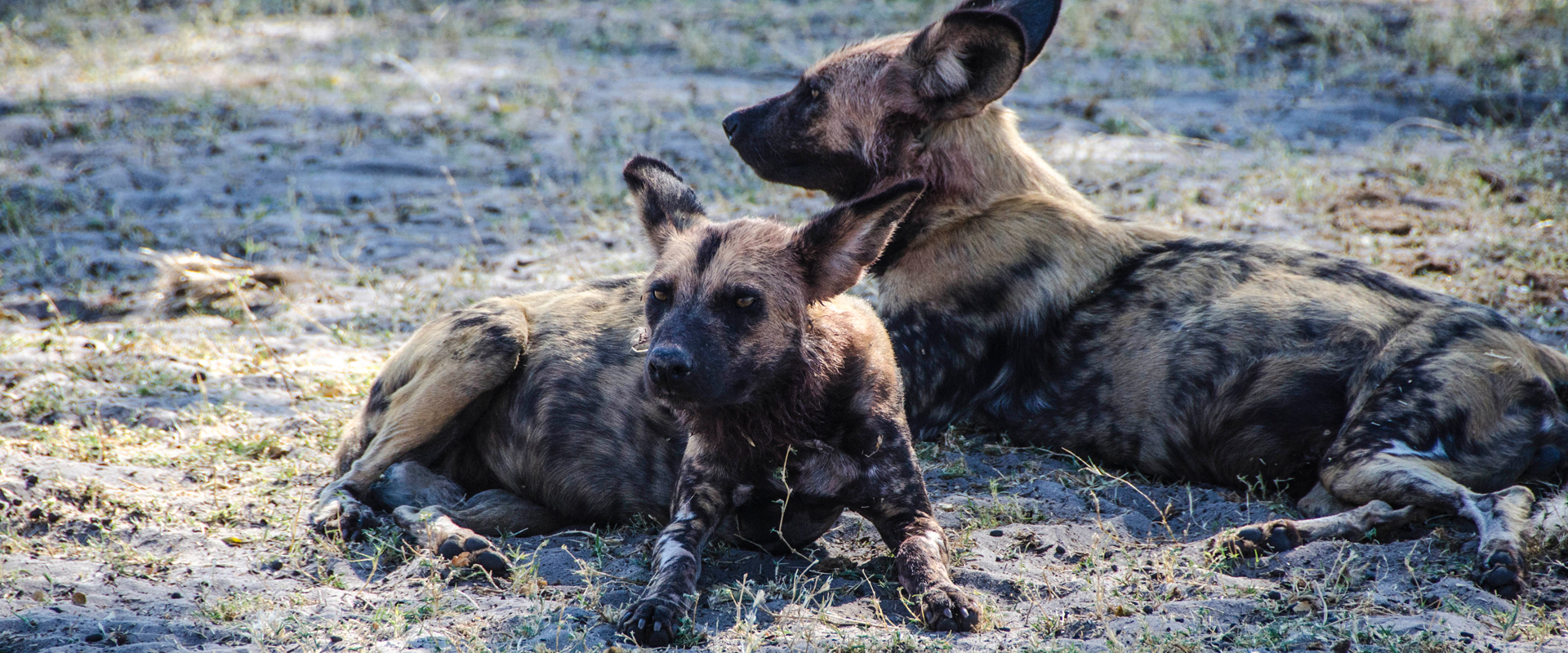JAN GROBLER’S GUINEA FOWL PIE
Extract from the book Life on a Table by Antoinette de Chavonnes Vrugt
I met Jan when my dear friend Glenda introduced her tour-operator and professional hunter husband to me during our time together at the Namibia Tourism Expo. This is one of Jan’s favourite memories.
“It was 1965, on the family farm in the Western Transvaal. I was a barefoot youngster with Grandpa’s .22 Saloon in my hand and two bullets, which he had handed to me early in the morning because Grandma needed two guinea fowls for Sunday lunch. This was my first opportunity to go hunting alone. That is how it was in those days: two bullets for two birds and don’t come back with only one fowl, then Grandpa’s thick leather belt called ‘Manners’ will politely enquire. And if you came back with three – well, that would also require a proper explanation.
Grandma always made pies from the guineas. First they were steamed for 2 to 3 hours, then the bones were removed and the veggies added, and then it was all cooked for another hour or until the veggies were done. The aroma of the cooking guinea fowls on the Welcome Dover coal stove will remain one of the sense impressions from my childhood days I will never forget.
In those days we used to pluck the feathers like you do with a chicken, but it was not a pleasant task, and in my later hunting years I discovered an easier way. The skin is the toughest part of the guinea fowl, more usable as leather than for human consumption. By removing the wings at the first joint of the body, cutting off the legs above the knees and then cutting open the skin from behind the head down across the back to the tail, you can actually remove the whole skin with feathers and all and pull it like a jersey over its head. Then you simply cut off the head and you’ll have a beautiful clean bird in hand.
When removing the intestines, be careful not to cut into them when opening up the stomach. A very interesting part is the crop situated in front of the chest. In dry times I’m always amazed to see the amount of thorns these birds consume. This makes them exceptionally valuable on a farm, so you must be careful not to over-utilize them. There is a rumour that you shouldn’t hunt them in the months containing an ‘r’ as they then have worms. I’ve never found this to be true and can only assume that the original idea was not to hunt them in the breeding season. When they’re still running around in flocks, it’s fine to hunt them, but as soon as they begin to pair off and become very skittish, ducking and diving through the bush, the breeding season has started and they should be left alone until around April.
So, after cleaning the bird, put it into a steam pot with about 5-7 whole cloves per bird and nothing else. Steam it for about two hours or until the meat is soft enough for the bones to be removed. You must be careful not to add any overpowering spices, as the guinea fowl has its own unique, strong taste that should not be overwhelmed by hot curries or garlic or any other strong-tasting ingredients. Once the bones are all out, add onion, potato, carrots, green beans and mushrooms to taste. Again, just enough to complement the meat, not dominate it. Add a bit of salt and black pepper and not more than a teaspoon of masala, and then cook the mixture for about another hour, until the veggies are soft and most of the water has boiled away. It shouldn’t be too dry, as the pastry will soak up the juices, adding to the flavour. If it looks too dry, add a cup of cream instead of water.
Small pies work very well, especially if the pastry completely consumes the content. I use ready made puff pastry, but if you have to make it yourself, use the following recipe.” Jan Grobler
PUFF PASTRY
INGREDIENTS
185 g cake flour
185 g butter, very cold
150 ml cream
A pinch of salt
METHOD
Grate the butter into the cake flour.
Crumb in the food processor.
Add cream gradually. Add salt.
Take out and knead the dough. The dough must be kept cold at all times.
Roll or push flat into a tin.
Bake for 20 minutes at 200°C.


Life on a Table can be purchased from Venture Media offices at 1 Mozart Street, Windhoek West, Namibia. To order a book email bonn@venture.com.na or phone 061 420 514.




